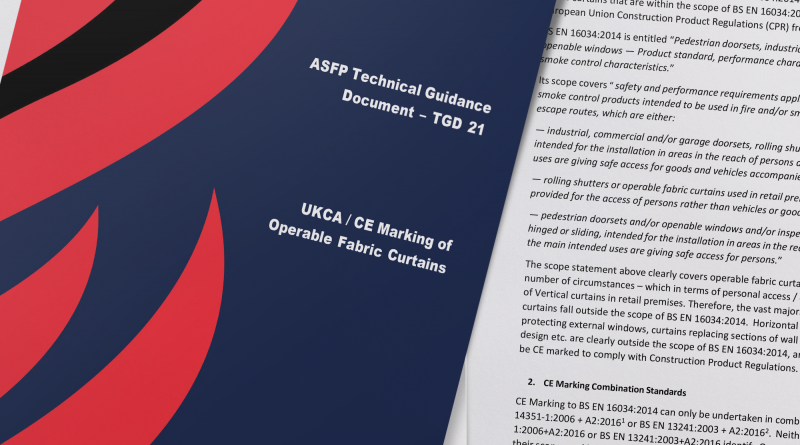ASFP releases new and updated technical publications
ASFP releases new and updated technical publications
The Association for Specialist Fire Protection (ASFP) published several documents in 2023, these included new and updated Advisory Notes (ANs) and Technical Guidance Documents (TGDs). Two new ANs were published and another four updated.
AN 32 covers the Association’s position on the use of BS 476-based fire resistance testing on Eurocode designed structures. This new AN considers the relationship between design codes, test methods and the building regulations. Written just prior to the Government starting the consultation on the future of BS 476 test methods, the text provides assurance for projects in the past and immediate future. However, once the outcome of the Government’s consultation on the future use of BS 476-based testing is clear, this text will need reviewing again.
AN 31 covers the use of performance smoke seals in active curtain assemblies. This new document was produced in response to comments in the marketplace about the use of smoke seals and whether S is the relevant smoke leakage classification.
AN 1 Fire and Your Legal Liability has been updated to reflect changes in legislation. AN 2 Indicative or Ad-Hoc Testing Essential Information, has also been updated. This outlines the role of third party certification and outlines the different types of fire tests that can be undertaken and provides a definition of each type of test report, explaining the validity of each.
AN 7 provides guidance on Horizontal linear gap seals used in curtain walling systems. It recommends that horizontal linear gap seals used in association with curtain walls are only tested to BS EN 1364-4 and that test evidence obtained using BS EN 1366-4 cannot be used to support that end-use application. It also notes that test results cover only the type / construction of the spandrel panel(s) used in the test.
AN 22 provides the ASFP position on compatibility between pipes and acoustic or firestopping Seals. This has been updated to provide recommendations for installing short metal pipes to be connected later in the construction programme; and for installing sound and firestopping products with cPVC pipes. The note recommends using jointing systems that do not require welding / soldering hot works wherever possible, it also highlights the problem of the incompatibility of some types of sealant with certain cPVC pipes. It recommends that where two or more systems come into direct contact, the system owners must have written evidence from the manufacturer of the pipe system to confirm the compatibility and long-term suitability of the system.
TGD 21 covers the UKCA and CE marking of operable fabric curtains, highlighting the conformity assessment requirements of active curtains. The specification of these needs to be checked to see if it comes within the scope of mandatory marking under the Construction Products Regulations, in addition to the requirements of the Machinery Directive. The document covers the situation today, and notes that the Machinery Directive provisions may change since the provisions of the UK Construction Product Regulations are likely to change at some point, probably in 2024. This is because the UK Government is likely to pass secondary legislation as a follow-up to the Building Safety Act.
TGD 23 is a new Code of Practice written to assist compliance with Irish Building Regulations and Building Control Regulations under the Building Control Act 1990 and Fire Safety Management under the Fire Services Acts 1981 and 2003. The Code provides an overview of relevant legislation and guidance on design and installation considerations.
The ASFP’s library of guidance documents is under constant review, with new publications developed and updated to meet industry need.
For further information on the ASFP and for passive fire protection training and advice, visit www.asfp.org.uk

